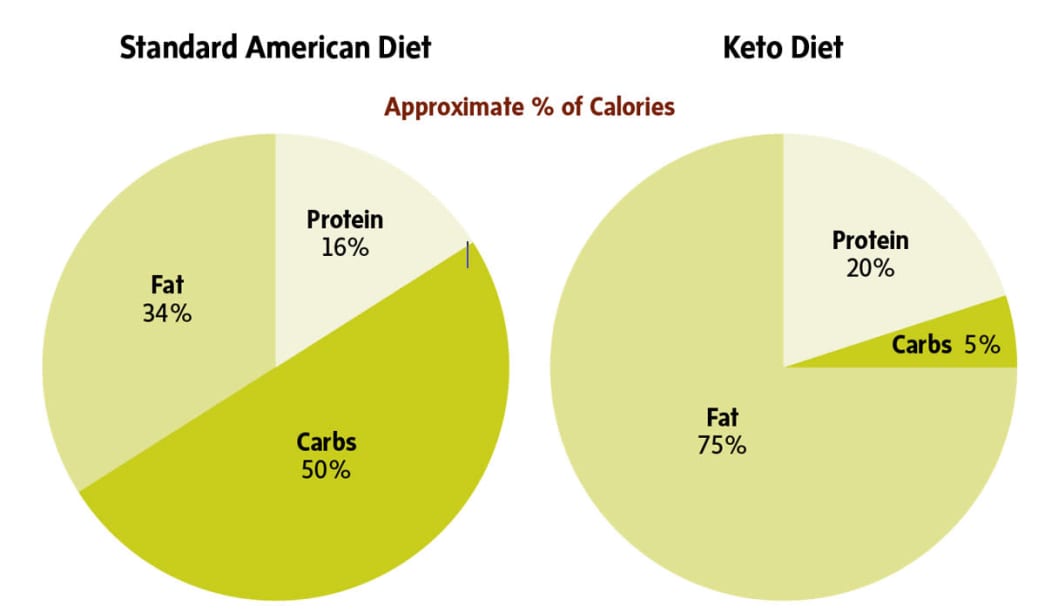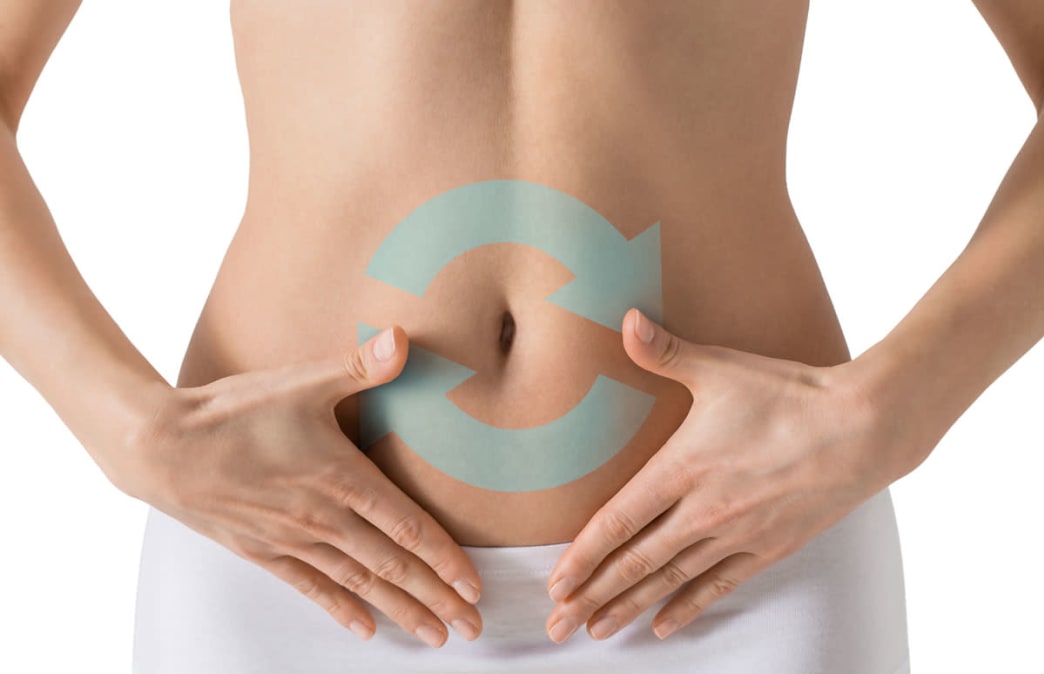My body weight has been the same since I was 20—never changes,” says Laurie Steelsmith, ND, a naturopath in Hawaii and author of Growing Younger Every Day. She decided to go on a keto diet not to lose weight, but to experience its effects. “After about 3 weeks, I felt fantastic, I had so much energy, and kept going,” she says. After following the diet for two months, Steelsmith started modifying it in a way that maintains improvements.
“I no longer have low blood sugar—ever,” which had been a problem before keto, says Steelsmith. “My tendency was not to eat because I get busy, so I got ‘hangry,’ and then I got irritable, and then I felt crummy,” she recalls. But that cycle is gone. One day after breakfast, she went on a six-hour hike up a mountain. Afterward, she knew it was time to eat but wasn’t very hungry, still had plenty of energy, and mentally felt on top of her game. Before keto, she would have been hungry, and likely hangry, long before the end of the hike.
What does the keto diet do?
The keto diet changes metabolism by shifting the human body’s fuel source from blood glucose to ketones, chemicals the liver makes when fat is burned to generate energy. A perfectly healthy human body could switch from one fuel to the other as needed, much like a hybrid car that uses either gas or electrical power. However, the large amount of carbohydrates that most people eat has broken that switch, blocking fat from being used as an energy source. The keto diet forces the switch to turn on.
“You’re burning fat, which is in your diet, but you’re also opening up pathways to eat your excess fat—you can liberate and mobilize fat, and your brain senses that energy,” says Dominic D’Agostino, PhD, a neuroscientist at the University of South Florida who has been researching keto diets and supplements for over 10 years. “If you’re on a really high-carbohydrate diet and you go four or five hours without food,” he adds, “your brain senses an energetic crisis because it doesn’t have quick or easy access to the fat.” If it did, there wouldn’t be a problem.
Fat burning and keto production are also triggered by fasting, which is why people can survive without food for weeks. Intense or prolonged exercise can also trigger temporary ketone production.
Why Keto Triggers Weight Loss
Scores of dramatic before-and-after photos, shared online by keto adherents, might give you the idea that there’s something magical about eating a lot of fat. But this isn’t why the keto diet works. “It helps you lose weight, but it does it by calorie restriction, because it helps you regulate your appetite,” says D’Agostino. “It’s really changing brain chemistry,” he adds. “Instead of your appetite controlling you, the diet allows you to control your appetite, to moderate your intake, and to really control what you eat.”
Keto Diet Basics
The carb content of keto diets is typically counted as net carbs: the amount of total carbs in a food minus its fiber content. Total net carbs per day range between 20 and 50 grams, much lower than the typical American diet, which contains between 200 and 300 grams of total carbs.
No one officially tracks the nation’s net carb consumption, but it’s estimated that we eat an average of 15 grams of fiber daily. Subtracting the fiber from total carbs, average daily net carbs would be around 185 to 285 grams—dramatically higher than keto diet levels.
The carb calories are replaced mostly by fat, as in healthy fat. Protein levels don’t dramatically change and shouldn’t be too high, as too much protein can prevent fat burning. Although we don’t usually turn protein into blood glucose, it can happen on a low-carb, high-protein diet.
The proportion of fat calories in a keto diet can vary from 60–75 percent. Protein would be about 20 percent, and carbs would make up the rest. This, says Steelsmith, is how a strict, very low-carb keto diet would compare with a standard American diet:
Approximate % of Calories

Standard American Diet
- Fat: 34%
- Protein: 16%
- Carbs: 50%
Keto Diet
- Fat: 75%
- Protein: 20%
- Carbs: 5%
Different Types of Keto Diets

The idea of a high-fat diet may seem inherently unhealthy—fast-food burgers without buns or fries, for example, an approach sometimes called “dirty keto.” But since the purpose of the diet is to improve health, fats should be healthy ones. Grass-fed meat, organic butter or ghee, and organic dairy products are popular. (Although milk is discouraged because, unlike cream, butter, yogurt, and cheese, it contains significant amounts of lactose, a form of sugar.) But the keto principle can be applied to any type of diet.
Steelsmith’s pre-keto diet was gluten-free, sugar-free, and dairy-free, and she isn’t a fan of red meat or added animal fats, so she worked out a keto plan that suited her own style of eating. “It was a very satiating diet,” she says, “and it all tasted great.”
Sample keto meal plans
Here’s an example of what she eats in a day, designed to contain no more than 30 grams of net carbs:
Breakfast
- 1/2 cup coconut yogurt: Net Carbs, 3.5 g
- 1/8 cup hemp hearts: Net Carbs, 0 g
- 1/4 cup blueberries: Net Carbs, 4.5 g
- Green tea with 2 teaspoons MCT oil: Net Carbs, 0 g
Lunch
- Grilled chicken and avocado: Net Carbs, 7 g
Snack
- 1/4 cup olives with olive oil and lemon juice: Net Carbs, 2 g
Dinner
- Sautéed greens such as chard, I cup cauliflower rice, and a salmon burger on salad: Net Carbs, 10 g
Total net carbs for the day: 27 g
See our keto Thanksgiving recipes.
Targeted Keto Supplements
By reducing carbohydrates, a keto diet dramatically reduces the amount of blood glucose available as fuel, and it takes a while for fat burning and ketone production to ramp up as the alternative fuel. During this transition period, “keto flu,” with symptoms such as fatigue and brain fog, can make it difficult to stick with the diet.
“You go through this glucose withdrawal, and it’s essentially the brain lacking the energy that it needs,” says D’Agostino. But specific supplements can help. “If you elevate ketones a bit through these products,” he says, “that can really help you adhere to the diet and maybe prevent a lot of the keto flu or brain fog.”
Supplements of beta-hydroxybutyrate (BHB) are actual ketones in a pill or powder, and studies have found that they effectively raise ketone levels in the human body. In addition, MCT oil from coconut is a fast-burning fat that helps enhance natural ketone production.
In more than a decade of research, D’Agostino has found that the most effective way to use these is in combination, in powdered form. As well as reducing keto flu symptoms, he says, “They can augment the therapeutic effects of the diet.”
How to Take Keto Supplements
BHB can have a gentle laxative effect if you take more than your body can absorb. D’Agostino recommends using BHB and MCT oil in powdered forms, which are designed to mix with water. Take equal amounts of each. Start with half the suggested dose, or about 5 grams of each, and gradually work your way up to a full dose. Your body will learn to absorb more, but if you experience a laxative effect, take a little less.
How to Start a Keto Diet
Steelsmith recommends educating yourself about the diet as a first step. Then calculate your personal nutritional needs. She’s found that it’s easiest to start with a net-carb limit of 50 grams, and once you get used to eating that way, gradually reduce the carb limit over time.
Initially, use an online calculator or an app (ketodietapp.com offers both) to work out what to eat to achieve your personal goals. And then make a plan and a shopping list, and take the plunge: Get rid of the foods you won’t be eating, stock up on those you will, and get keto supplements to help you stay on track. Doing the diet with a partner may be easier, or you can find buddies online. You might want to track everything you eat for a while, but with time, you’ll develop a new sense of what to eat. It’s a process, says Steelsmith. “It’s re-educating your own perception of your body.”
Keto Benefits Beyond Weight Loss
The keto diet originated in 1921 as a treatment for type 1 diabetes (before the invention of diabetes drugs) and seizures among children with epilepsy. Since then, studies have found that it may assist in the treatment of certain diseases, including:
- Type 2 diabetes
- Prediabetes
- Seizure disorders
- Acne and eczema
- Polycystic ovary syndrome (PCOS)
- Cancer
- Amyotrophic lateral sclerosis (ALS)
- Alzheimer’s disease
- Traumatic brain injury
- Digestive disorders
- Autoimmune diseases
- Gout
- Fatty liver disease
In addition, because the keto diet lowers unhealthy levels of blood glucose, it may lower risk for atherosclerosis, heart disease, and stroke.
Solutions to Common Keto Digestive Problems

Tamara Duker Freuman, RD, a New York-based dietitian and author of The Bloated Belly Whisperer, often sees clients who are following a keto diet and experience digestive problems. “People are prone to eating extremely large portions of a limited number of staple foods, such as an entire avocado in a meal, sometimes even more than once daily,” she says. “This can lead to digestive issues that people consuming a more varied diet may be less likely to encounter due to more modest portions of any given food.” These are some of her solutions to common keto pitfalls:
- AVOCADO, CAULIFLOWER, AND CELERY: These foods can cause gas when eaten in large amounts. Eat smaller portions at any one time, and diversify with vegetables that are less gassy, such as spinach, zucchini, peppers, string beans, cucumbers, and arugula. Try alternatives to cauliflower rice, such as spiralized zucchini or kelp noodles.
- BRUSSELS SPROUTS, CASHEWS, AND PISTACHIOS: Enzyme supplements of alpha galactosidase can reduce gassiness or other digestive issues.
- HEARTBURN: Large amounts of romaine or other lettuces make the stomach work hard to break them down and can trigger heartburn. Try cooked vegetables instead.
- DIARRHEA: A combination of high fat and low fiber can lead to diarrhea. Soluble fiber, such as an acacia fiber supplement, can help.
- CONSTIPATION: Lack of fiber is usually the cause. Eat the full amount of low-carb vegetables that fit your keto plan and, if necessary, take a soluble fiber supplement. Or, take magnesium at night, which can loosen stools if you take enough.
- LOW-CARB FLOURS: Coconut flour is very dense, absorbs a lot of water, and can be hard to digest. Almond flour is easier on the stomach and a good source of fiber.
- INULIN: Found in many low-carb packaged foods, and in low-carb pasta made with Jerusalem artichoke flour, inulin is a type of fiber that can cause digestive problems.
- SUGAR ALCOHOLS: Sugar-free sweeteners whose names end in “-ol,” even if they’re considered natural, can cause digestive upset. Look for other natural sugar-free sweeteners, such as stevia or monk fruit.
Written by Vera Tweed for Better Nutrition and legally licensed through the Matcha publisher network. Please direct all licensing questions to legal@getmatcha.com.
Featured image provided by Better Nutrition
Explore all MariGold Keto products right here!
MariGold has a whole range of Keto line of foods that are a great on-the-go and easy, healthy snack for beginner and expert Keto dieters alike! Our Fat Bombs, Protein Bars, and Snack Nuts have tasty flavors like Chocolate Chip Cookie Dough, Danish Butter Cookie, and Salty Caramel. These flavors (along with many others) will satisfy your sweet (or savory) tooth and are loaded with healthy, premium ingredients without any of the junk! Check out our Keto Friendly foods:





